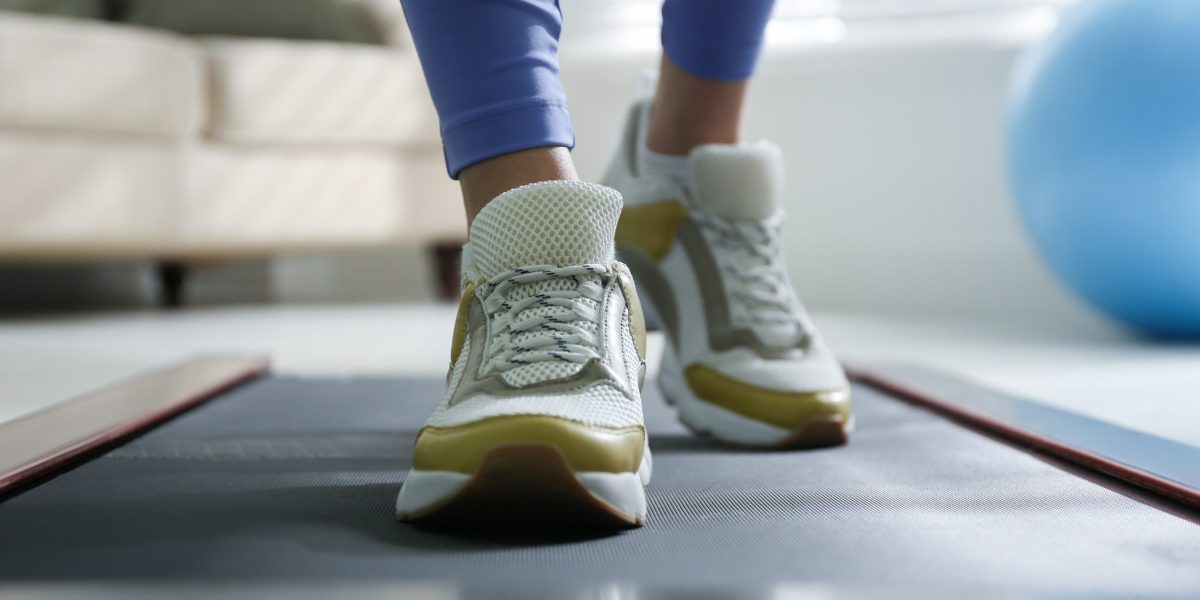Before you crank up the belt, though, make sure you’re stable—remember, there are no handlebars to hold onto (so if you have balance issues, you might want to stick to a treadmill that has these). “If it hurts or makes you uncomfortable, stop,” Richey says. “There is no sense in getting hurt trying to get fitter and healthier.”
1. Increase the speed.
If you want to get your heart beating faster, the simplest option is to pick up the pace. A 2022 review in Frontiers in Public Health concluded that brisk walking can improve both cardio fitness and muscular strength (to an extent—not as much as you’d get with a dedicated strength program, of course). And high intensity is even better than moderate when it comes to improving your aerobic capacity, or how efficiently your body can use oxygen so that you can keep taking step after step.
Many walking pads go up to about four miles per hour, or a 15-minute mile pace, so you likely won’t be running, but it will take some effort. If things get to be too much, you can always pull back—or work in some recovery periods at lower effort to get a breather.
2. Try intervals.
Intervals are an efficient way to make the most of a walking pad. “You can get the same amount of work done in a shorter amount of time,” Richey says. However, he suggests getting used to steady-paced walks first so you know how the equipment feels and functions before you fiddle with the speed.
After you do, Bernadyn says you can try alternating two minutes at a challenging effort with a minute of recovery or easy effort, where you can catch your breath, sticking with this pattern for about 20 to 30 minutes total. (Just know that if you’re very fit, a walking pad might not go fast enough to really hit a super high heart rate.)
3. Turn to the side for some lateral movement.
Consider switching directions sometimes for side-to-side lateral walks. “It helps to work the lateral muscles and the medial muscles to help you balance and stabilize better,” Richey says. In particular, you’ll feel the gluteus medius and gluteus minimus on the side of your butt—two muscles that all too often go ignored since we don’t move sideways often in our day-to-day life when we’re just walking forward.
You’ll want to get on the walking pad facing forward like you normally would (to stay safe), set it to a slow pace, then turn to the side once you feel comfortable—and don’t forget to switch which way you’re facing. Bernadyn suggests shooting for just 30 to 60 seconds per side at a time, adding that you can use these short sidestepping intervals whenever you feel the need to break up the monotony of straightforward walking.
4. Do high knee marches.
Looking to work your core? Bernadyn recommends turning down the speed to 0.3 or 0.5 miles per hour, and doing some high knee marches. “Go at a slow enough pace that you’re able to drive your knee up to 90 degrees, flexing the quad, and then take that full step down without feeling like you’re going to fall off the back of your walking pad,” she says. Your core will automatically fire up to keep you balanced as you go.
